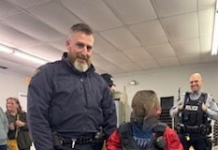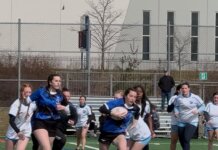By Shelley Clee
For the record, I am not an expert on trauma. I do not have a degree in psychology or social work. I am, however, a parent of a child with documented childhood (and post childhood) trauma, attachment disorder and a diagnosed learning disability.
I have nearly a decade of experience in advocacy for our now 18 year old son, especially in the area of navigating the school system.
Trauma, (or ACEs: Adverse Childhood Experiences) in the academic or scholarly definition of the word is an exceptional experience in which powerful and dangerous events overwhelm a person’s capacity to cope. (Rice & Groves, 2005). These events may be the death of a loved one, divorce, poverty, bullying, etc. In our case, it was child abuse. We adopted our son when he was 10. He came to us as a child survivor of abuse: mental, emotional, verbal, physical, and significant neglect. He had been exposed to a life that no person should ever be exposed to, including prostitution, drug and alcohol abuse, domestic violence, mental illness, and parental incarceration. He suffered significant losses throughout his childhood, including his siblings.
Children who have suffered through trauma deal with the very real effects of a psychological brain injury, and are more prone to learning disabilities, depression, social isolation, emotional detachment, difficulty concentrating, anxiety, and more. We know that children with trauma have great difficulty forming trusting relationships with others, and forming attachments with adults. They are parentified. They become the caregivers. In short, the effects of trauma can be physically, developmentally, and psychologically devastating.
Children who have experienced trauma need active intervention from a variety of sources to help cope with the lifelong effects of this brain injury. The medical community is beginning to understand the effects of trauma and is developing effective long-term treatment strategies. Slowly, the research is trickling to social workers and schools. We are now better understanding how the brain injury impacts on their daily lives. Within the school system, traumatized kids will mask their pain with what appears to be unusual behaviour. Some might even call it by other names. This is the flight, fight or freeze response to triggers, and these responses are completely out of their control.
You have to understand the brain to understand trauma. The neocortex, also known as the rational brain, helps control the ability to think, reason, use higher order thinking skills, make decisions and maintain flexibility. When this part of the brain is regulated, the child can focus on learning. The limbic system, (or the fear brain) regulates mood, memory, attention, and hormone control. This part of the brain houses the survival mode and is concerned with self-preservation, fear, and protective responses related to defense such as fight or flight. Learning cannot happen when a child is functioning in the fear brain. The last part of the brain, reptilian, includes the brain stem and cerebellum. This part of the brain also is concerned with self-preservation and is ready to respond at all times during the day. Mental health issues such as obsessive-compulsive disorder, post-traumatic stress disorder, and panic disorder have roots in this part of the brain.
The most impactful challenge for kids with trauma is executive functioning. That is, it affects their memory, their ability to focus, plan, process information, complete tasks on time, and communicate. These kids can learn – our son is proof of that, having graduated in 2019 with high honours and now attending Dalhousie University, but they learn differently. They process information differently. And our schools and universities must support these different learning styles if we are to stop these kids from falling through the cracks and have a chance at a successful life. This is where advocacy is so important.
When you haven’t had a secure attachment from birth, and have been let down, ignored, betrayed by every adult around you, you develop problems forming relationships with anyone. Trust does not exist. I have heard it explained as that abused animal that shows up at your back door. It wants to take the food from your hand, but it is afraid. It may eventually take the food, but then it will run. These kids are afraid. They are afraid of being let down again. Their walls are high and mighty. It takes a great deal of time and support to help them understand they are loved, valued, and cared for. And it takes a great deal of patience and guidance to help others understand how these kids learn.
One of the challenges within the school system, and this is not the fault of educators, is that when kids seem to be misbehaving, our schools often use discipline that involve withdrawing attention and support, or opportunities, rather than asking the question “what happened to you”. And this is what we need to be asking. These kids have had everything taken from them. They are anticipating more loss. This is the last option that should be considered. In most cases, this “misbehaving” is simply a fear response. And how one responds, can make or break the trust.
Many of these kids are paralyzed by the idea of making a mistake, and that can appear to be oppositional. What seems small and trivial to us, is often magnified to them. This is where the approach has to be different, where compassion becomes the tool to help disarm them of their grief.
These kids aren’t asking you to give them special privileges. They are looking for trust and connection.
Shelley Clee lives in Waverley.




















